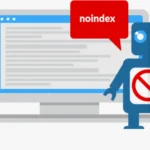On-Page SEO Guide: 8 On-Page Techniques

8 On-Page SEO Techniques
Introduction:
On-page SEO refers to the optimization of individual web pages to improve their search engine rankings and attract more organic traffic. This involves optimizing various elements on a webpage, such as content, HTML source code, and site structure, to make them more relevant and appealing to both search engines and users. In the realm of digital marketing, on-page SEO plays a crucial role as it directly impacts a website’s visibility, credibility, and ultimately its success in driving targeted traffic and conversions.
How On-Page SEO Directly Impacts Search Engine Rankings and User Experience:
Improved Relevance: Optimizing on-page elements ensures that search engines understand the relevance of your content to specific search queries, increasing the likelihood of ranking higher in search results.
Enhanced User Experience: On-page SEO practices such as optimizing page load speed, providing high-quality content, and improving site navigation contribute to a better user experience. This leads to higher user engagement, reduced bounce rates, and increased time spent on the website.
Increased Visibility: Effective on-page SEO can help your website stand out in search engine results pages (SERPs), attracting more clicks and organic traffic. Higher visibility can lead to more opportunities for conversions, whether it’s sales, leads, or engagement with your content.

1. Keyword Research and Optimization
Keyword research and optimization are crucial components of on-page SEO, which focuses on optimizing individual web pages to improve their search engine rankings and attract organic traffic. Here’s an explanation of each aspect:
Importance of keyword research:
Keyword research involves identifying the specific words and phrases that people use when searching for information, products, or services online. By understanding the language and queries used by your target audience, you can optimize your website’s content to align with their search intent. This is vital because search engines like Google rely on keywords to understand the relevance of web pages to user queries. Effective keyword research allows you to:
- Target high-volume keywords with substantial search traffic.
- Identify long-tail keywords (more specific, longer phrases) that may have less competition but can still drive relevant traffic.
- Understand user intent behind different search queries and tailor your content accordingly.
- Discover niche topics and opportunities for content creation and optimization.
Tools and techniques for effective keyword research:
Keyword research tools: Platforms like Google Keyword Planner, SEMrush, Ahrefs, Moz Keyword Explorer, and Ubersuggest provide insights into search volume, keyword difficulty, related terms, and more.
Competitor analysis: Analyzing the keywords your competitors are targeting can offer valuable insights and inspiration for your keyword strategy.
Customer feedback and inquiries: Gathering input from your target audience, such as through surveys or monitoring customer queries, can reveal common language and topics of interest.
Search engine autocomplete and related searches: Observing Google’s autocomplete suggestions and related search queries can uncover additional keyword ideas and variations.
Strategies for keyword placement and optimization:
Content optimization: Integrate keywords naturally into your webpage content, including headings, paragraphs, and image alt attributes. Focus on providing valuable, informative content that satisfies user intent while incorporating targeted keywords.
Meta tags optimization: Include target keywords in meta titles, meta descriptions, and meta keywords (though the latter has diminished importance in recent years). Meta tags provide concise summaries of your page’s content to search engines and users.
URL optimization: Structure your URLs to include relevant keywords that reflect the content of the page. Clean, descriptive URLs not only improve SEO but also enhance user experience and readability.
By conducting thorough keyword research and strategically optimizing your content, meta tags, and URLs, you can enhance your website’s visibility in search engine results pages (SERPs) and attract more qualified traffic.
You May Also Like Reading: Benefits of B2B SEO

2. Creating High-Quality Content
Creating high-quality content is essential for on-page SEO as it directly impacts a website’s relevance, authority, and user experience, all of which are critical factors in search engine ranking algorithms. Here’s an explanation of its role and strategies for optimization:
Role of High-Quality Content:
Search engines aim to provide users with the most relevant and valuable content for their queries. High-quality content signals to search engines that a webpage is authoritative, informative, and trustworthy, thus increasing its chances of ranking higher in search results.
Quality content enhances user engagement, leading to longer dwell times, lower bounce rates, and increased return visits, all of which are positive signals for search engines.
Strategies for Creating Engaging, Relevant, and Authoritative Content:
Keyword Research: Conduct thorough keyword research to understand what topics and queries your audience is searching for. Use tools like Google Keyword Planner, SEMrush, or Ahrefs to identify relevant keywords with decent search volume and low competition.
Provide Value: Focus on addressing the needs and interests of your target audience. Offer solutions to their problems, answer their questions, or provide valuable insights and information that they can’t easily find elsewhere.
Originality and Uniqueness: Aim for originality in your content. Avoid duplicating content from other sources and strive to provide a unique perspective or angle on a topic. Original content is more likely to attract links and shares, boosting its SEO performance.
Useful and Actionable: Ensure that your content is actionable and provides real value to the reader. Whether it’s a how-to guide, a tutorial, or an in-depth analysis, make sure readers can take away practical insights or steps they can implement.
Visual Elements: Incorporate relevant images, infographics, videos, or other multimedia elements to enhance the visual appeal and comprehensibility of your content. Visuals can help break up text, improve engagement, and increase shareability.
Regular Updates: Keep your content fresh and up-to-date by regularly updating it with new information, statistics, or insights. This demonstrates to both users and search engines that your website is actively maintained and remains relevant over time.
Tips for Optimizing Content Structure, Headings, and Formatting for SEO:
Use Descriptive Headings: Structure your content with descriptive headings (H1, H2, H3, etc.) that accurately reflect the topic and hierarchy of information. Headings not only improve readability but also help search engines understand the content’s structure and relevance.
Optimize Meta Tags: Craft compelling meta titles and descriptions that accurately summarize the content of each page. Include relevant keywords naturally within these tags to improve visibility in search results and encourage click-through rates.
Include Internal Links: Incorporate internal links within your content to connect related pages or topics within your website. Internal linking helps distribute link equity, improve crawlability, and enhance the user experience by guiding visitors to relevant resources.
Optimize URL Structure: Ensure that your URLs are concise, descriptive, and include relevant keywords where appropriate. A clean and user-friendly URL structure makes it easier for both users and search engines to understand the content of a page.
Optimize for Readability: Write content that is easy to read and understand. Use short paragraphs, bullet points, and concise sentences to improve readability. Avoid jargon or overly complex language that may alienate readers or confuse search engines.
By following these strategies and tips, you can create high-quality content that not only satisfies the needs of your audience but also performs well in search engine rankings, driving organic traffic to your website.

3. Optimizing Meta Tags
Optimizing meta tags is a crucial aspect of on-page SEO that involves fine-tuning specific elements within the HTML code of a webpage to enhance its visibility and attractiveness in search engine results pages (SERPs). Here’s a breakdown of each component:
Explanation of Meta Tags:
Title Tags: These are HTML elements that define the title of a webpage. They appear as clickable headlines in SERPs and are crucial for both SEO and user experience.
Meta Descriptions: Meta descriptions are brief summaries of a webpage’s content. While they don’t directly impact rankings, they play a significant role in enticing users to click through to the website.
Meta Keywords: Historically, meta keywords were used to indicate the primary keywords relevant to a webpage’s content. However, search engines like Google no longer consider them for ranking purposes due to abuse and manipulation.
Best Practices for Writing Compelling and SEO-friendly Meta Titles and Descriptions:
Include Target Keywords: Incorporate relevant keywords naturally into both the title tag and meta description to signal the page’s topic to search engines and users.
Maintain Relevance: Ensure that both the title tag and meta description accurately reflect the content of the webpage to avoid misleading users.
Be Concise and Informative: Keep titles under 60 characters and meta descriptions under 160 characters to prevent truncation in SERPs. Provide a clear and compelling preview of the page’s content.
Add Unique Value: Craft unique and persuasive meta tags that differentiate your page from competitors and encourage clicks.
Create a Call-to-Action (CTA): Incorporate a compelling CTA in the meta description to prompt users to take action, such as “Learn More,” “Shop Now,” or “Sign Up.”
Importance of Optimizing Meta Tags for Click-Through Rate (CTR) and Search Engine Visibility:
CTR Optimization: Well-optimized meta tags can significantly impact the click-through rate from search results. Compelling titles and descriptions attract users’ attention and entice them to click on your link over others.
Search Engine Visibility: Optimized meta tags improve the relevance and clarity of your webpage’s content, making it more likely to appear prominently in relevant search queries. While meta tags alone may not directly influence rankings, they indirectly contribute to improved visibility by enhancing user engagement signals.
In summary, optimizing meta tags involves crafting compelling and concise title tags and meta descriptions that accurately represent the webpage’s content, incorporate relevant keywords, and encourage clicks. By adhering to best practices, you can improve both click-through rates and search engine visibility, ultimately driving more organic traffic to your website.

4. URL Structure and Optimization
URL structure plays a crucial role in both user experience and search engine optimization (SEO). A well-optimized URL not only helps search engines understand the content of a page but also makes it more user-friendly, improving overall website performance.
Importance of URL Structure for Users:
Readability and Relevance: A clear and concise URL provides users with a quick understanding of the page’s content. It should ideally reflect the topic or purpose of the page, making it easier for users to decide whether to click on the link.
Navigation: Users often use URLs to navigate through a website. A logical and organized URL structure makes it easier for users to predict the structure of the website and find relevant content.
Trust and Credibility: Clean and well-structured URLs contribute to the overall professionalism and credibility of a website. Users are more likely to trust a site with clear and meaningful URLs.
Importance of URL Structure for Search Engines:
Crawlability: Search engine crawlers use URLs to discover and index web pages. A structured and easily understandable URL helps search engines crawl and index content more efficiently.
Keyword Relevance: Keywords in the URL can provide additional context to search engines about the content of the page. Including relevant keywords in the URL can contribute to better rankings for those keywords.
Ranking Factors: Search engines consider various on-page factors, and the URL is one of them. A well-optimized URL can positively impact a page’s chances of ranking higher in search engine results pages (SERPs).
Guidelines for Creating SEO-Friendly URLs:
Use Hyphens to Separate Words: Use hyphens (-) to separate words in the URL instead of underscores (_) or spaces. For example, use “best-seo-practices” instead of “best_seo_practices” or “best seo practices.”
Keep it Short and Simple: Shorter URLs are easier to remember and share. Aim for concise URLs that convey the main topic of the page.
Include Keywords: Incorporate relevant keywords in the URL to provide search engines with additional information about the page’s content.
Avoid Special Characters: Stick to alphanumeric characters and hyphens. Avoid using special characters that might cause issues with web browsers or search engines.
Tips for Optimizing URL Structure and Length:
Remove Unnecessary Elements: Exclude unnecessary parameters or session IDs from URLs. Keep URLs clean and focused on the main content.
Canonicalization: Use canonical tags to specify the preferred version of a URL if there are multiple versions of a page with similar content.
Avoid URL Duplication: Ensure that URLs are unique to avoid duplicate content issues. Use 301 redirects to redirect traffic from old or duplicate URLs to the preferred version.
HTTPS: Secure your website with HTTPS. Search engines may prioritize secure websites, and it can positively impact rankings.
In summary, optimizing URL structure is essential for both users and search engines. A well-structured and SEO-friendly URL contributes to better user experience, improved search engine rankings, and overall website performance.

5. Image Optimization
Image optimization is a crucial aspect of on-page SEO that involves enhancing the images on your website to improve user experience, increase page load speed, and boost search engine rankings. Here’s a breakdown of its importance and best practices:
Importance of Image Optimization for On-Page SEO:
Page Load Speed: Large, unoptimized images can significantly slow down your website’s loading time, which can lead to higher bounce rates and lower search engine rankings, as speed is a ranking factor for search engines like Google.
User Experience: Optimized images improve the overall user experience by ensuring that pages load quickly and smoothly. Users are more likely to engage with content that loads quickly and provides high-quality visuals.
Accessibility: Properly optimized images include descriptive alt text, making your content more accessible to visually impaired users who rely on screen readers to navigate the web.
Search Engine Rankings: Search engines consider various factors when determining page rankings, including image optimization. Optimized images with relevant filenames, alt text, and captions can improve the visibility of your content in image search results and enhance your overall SEO efforts.
Best Practices for Image Optimization:
File Names: Use descriptive file names that accurately reflect the content of the image. Avoid generic file names like “image123.jpg” and instead opt for descriptive names that include relevant keywords, separated by hyphens (e.g., “seo-image-optimization.jpg”).
Alt Text: Alt text, or alternative text, provides a textual description of an image for users who cannot see it. Write concise and descriptive alt text that accurately describes the content and purpose of the image while incorporating relevant keywords where appropriate.
Captions: Captions provide additional context for images and can improve user engagement. Use captions to provide relevant information or context related to the image, and consider including keywords naturally within the caption.
Tools and Techniques for Optimizing Images:
Image Compression Tools: Use image compression tools like Adobe Photoshop, TinyPNG, or Squoosh to reduce the file size of images without sacrificing quality. Smaller file sizes result in faster loading times.
Responsive Images: Implement responsive design techniques to serve appropriately sized images based on the user’s device and screen size. This ensures optimal viewing experiences across various devices and improves performance.
Lazy Loading: Implement lazy loading techniques to defer the loading of off-screen images until the user scrolls near them. This can help improve initial page load speed by prioritizing the loading of visible content first.
CDN Integration: Utilize Content Delivery Networks (CDNs) to store and deliver images from servers located closer to the user’s geographic location. CDNs can help reduce latency and improve image loading times for users worldwide.
By following these best practices and utilizing optimization tools and techniques, you can enhance the performance of your website’s images, improve user experience, and bolster your on-page SEO efforts.

6. Internal Linking Strategies
Internal linking is a crucial aspect of both on-page SEO and enhancing user experience on a website. Here’s an explanation of its significance and some techniques and best practices:
Significance of Internal Linking:
On-Page SEO: Internal linking helps search engines understand the structure and hierarchy of your website. By linking between pages, you signal to search engines which pages are important and how they are related to each other, which can positively impact your website’s rankings in search results.
User Experience (UX): Internal links provide a pathway for users to navigate through your website seamlessly. When done strategically, internal linking can guide users to relevant content, keeping them engaged and reducing bounce rates. It also helps users discover more information on topics they’re interested in, thus improving their overall experience on your site.
Techniques for Strategically Linking Between Pages:
Create a Site Structure: Develop a clear hierarchy for your website’s pages, with important pages closer to the homepage and supporting pages nested accordingly. This structure helps both users and search engines navigate through your content efficiently.
Use Relevant Anchor Text: Anchor text is the clickable text of a hyperlink. Use descriptive and relevant anchor text that accurately describes the content of the linked page. Avoid generic phrases like “click here” and instead incorporate keywords that reflect the topic or theme of the linked page.
Link from High-Authority Pages: Identify pages on your website that already have high authority or receive significant traffic. Link from these pages to other relevant pages to distribute link equity and boost the visibility of less prominent pages.
Implement Content Silos: Group related content together into thematic clusters or silos. Within each silo, interlink between pages to reinforce topical relevance and signal to search engines the depth of expertise on a particular subject.
Best Practices for Anchor Text Optimization and Maintaining a Natural Link Profile:
Diversify Anchor Text: Avoid using the same anchor text repeatedly across multiple internal links, as this can appear manipulative to search engines. Instead, vary your anchor text to reflect natural language patterns and the context of the surrounding content.
Balance Internal and External Links: While internal links are essential, ensure a healthy balance between internal and external links. Incorporating relevant external links to authoritative sources can enhance the credibility and trustworthiness of your content.
Regularly Audit and Update Links: Conduct periodic audits of your internal links to identify broken links, outdated content, or opportunities to add new links. Keeping your internal linking structure up-to-date ensures a seamless user experience and maintains the integrity of your website’s SEO efforts.
By implementing these strategies and best practices, you can harness the power of internal linking to improve both the SEO performance and user experience of your website.

7. Mobile-Friendly Optimization
Mobile-friendly optimization refers to the process of ensuring that a website is easily accessible and usable on mobile devices such as smartphones and tablets. With the increasing prevalence of mobile browsing, optimizing for mobile-friendliness has become crucial for maintaining a competitive edge in search engine rankings and providing a positive user experience.
Importance of Mobile-Friendliness for On-Page SEO:
Mobile-friendliness is a significant ranking factor in Google’s search algorithm. Websites that are not optimized for mobile devices may receive lower rankings in mobile search results, impacting their visibility and organic traffic.
With the majority of internet users now accessing the web through mobile devices, having a mobile-friendly website is essential for reaching and engaging with a broader audience.
Google prioritizes mobile-first indexing, meaning it primarily uses the mobile version of a website’s content for indexing and ranking purposes. Therefore, a lack of mobile optimization can directly impact a site’s visibility in search results.
Strategies for Optimizing Websites for Mobile Devices:
Responsive Design: Implementing a responsive web design ensures that a website’s layout and content adapt seamlessly to different screen sizes and resolutions. This approach provides a consistent user experience across all devices, eliminating the need for separate mobile and desktop versions of the site.
Mobile-Friendly Content: Optimize content for mobile consumption by using concise headlines, legible fonts, and easily tappable buttons. Prioritize important information and ensure that it remains accessible without excessive scrolling or zooming.
Page Speed Optimization: Mobile users expect fast-loading web pages. Minimize server response times, reduce unnecessary elements, and leverage browser caching to improve page load times on mobile devices.
Optimized Images and Media: Compress images and videos to reduce file sizes without sacrificing quality. Use formats that are compatible with mobile browsers and employ lazy loading to defer the loading of non-visible media until it’s needed.
Tools for Testing and Improving Mobile Usability:
Google’s Mobile-Friendly Test: This tool evaluates a website’s mobile-friendliness and provides recommendations for improvement based on Google’s guidelines.
PageSpeed Insights: Analyze the performance of a website on mobile devices and receive suggestions for optimizing page speed and user experience.
Mobile Usability Report in Google Search Console: Monitor mobile usability issues detected by Google and take corrective actions to enhance the mobile experience.
User Testing: Conduct usability tests with real users to identify pain points and gather feedback on the mobile experience. Use this insight to refine the design and functionality of the mobile site.

8. Page Speed Optimization
Page speed optimization refers to the process of improving the loading speed of a website’s pages. This is crucial for both search engine rankings and user experience.
Impact of Page Speed on Search Engine Rankings:
SEO Ranking Factor: Search engines, particularly Google, consider page speed as one of the ranking factors. Websites that load faster tend to rank higher in search engine results pages (SERPs).
User Experience (UX): Page speed directly affects user experience. Slow-loading pages can frustrate visitors, leading to higher bounce rates and lower engagement metrics, which in turn can negatively impact search engine rankings.
Techniques for Improving Website Loading Speed:
Image Optimization: Compressing images, using the correct file format (e.g., JPEG, PNG), and specifying image dimensions can significantly reduce file sizes and improve loading times.
Caching: Implementing browser caching and server-side caching can store frequently accessed website elements, such as images and CSS files, locally on users’ devices or on intermediary servers, reducing load times for returning visitors.
Minification: Minifying HTML, CSS, and JavaScript files by removing unnecessary whitespace, comments, and redundant code can reduce file sizes and improve loading speed.
Content Delivery Network (CDN): Utilizing a CDN can distribute website content across multiple servers worldwide, enabling faster delivery to users by serving content from the server closest to their location.
Reducing HTTP Requests: Combining and minimizing CSS and JavaScript files, as well as optimizing web fonts, can decrease the number of HTTP requests required to load a page, speeding up the rendering process.
Optimizing Server Response Time: Improving server performance, utilizing efficient hosting solutions, and implementing server-side optimizations can reduce the time it takes for the server to respond to requests.
Tools for Measuring and Optimizing Page Speed Performance:
Google PageSpeed Insights: This tool analyzes website performance on both mobile and desktop devices, providing optimization suggestions and a performance score based on Google’s best practices.
GTmetrix: GTmetrix offers detailed insights into page loading speed, including recommendations for improvement, waterfall charts illustrating resource loading times, and historical performance data.
Pingdom Website Speed Test: Pingdom allows users to test website speed from multiple global locations, providing performance insights and actionable recommendations for optimization.
WebPageTest: WebPageTest offers advanced testing options, including simulated connections speeds, device emulation, and filmstrip views of page loading, helping users identify performance bottlenecks.
By implementing these techniques and utilizing performance measurement tools, website owners can enhance both their search engine rankings and user experience by optimizing page speed.

Conclusion
In conclusion, we’ve explored several key on-page SEO techniques that are essential for improving your website’s visibility and overall success in search engine rankings. From optimizing meta tags to enhancing internal linking structure, each technique plays a crucial role in ensuring that your content is easily discoverable by both users and search engine algorithms.
Importance of On-Page SEO:
Effective on-page SEO is the foundation of any successful digital marketing strategy. By implementing these techniques, you not only improve your website’s visibility in search engine results but also enhance user experience, increase organic traffic, and ultimately drive conversions and revenue.
Encouragement for Readers:
Now that you’re equipped with the knowledge of these essential on-page SEO techniques, I encourage you to take action and implement them on your website. Whether you’re a seasoned SEO professional or just starting out, optimizing your on-page elements is a continuous process that can yield significant results over time. By investing time and effort into refining your on-page SEO strategy, you’ll be one step closer to achieving your website’s full potential.
Thanks For Reading: On-Page SEO Guide: On-Page SEO Guide: 8 On-Page SEO Techniques
Partner With Naumaan Oman
Recent Posts
Working Together Ideas come to life
No matter how big your company is, as you expand and reach new highs you’ll want an agency to have your back. One with a process
360presence@gmail.com

© 2023 360PRESENCE All rights Reserved
















